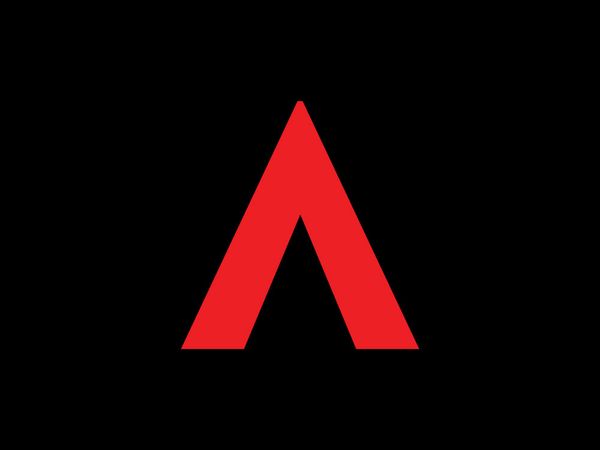Ever since the notion of an American Formula One team started getting bandied about in January 2014 when Gene Haas responded to the FIA’s “Call for Expression of Interest” regarding a Formula One entry, the names Haas and Circuit of the Americas have been inexorably linked.Prior to Gene Haas forming Haas F1 Team, there hadn’t been an American Formula One team since 1986. And prior to Circuit of the Americas, or COTA as it is better known, there hadn’t been a Formula One race on American soil since the 2007 United States Grand Prix at Indianapolis Motor Speedway.COTA put Formula One back on America’s map when it became the country’s first purpose-built Formula One facility. Constructed in 2011 and hosting its first Formula One race in 2012, COTA and its residency of Austin, Texas, have become a destination venue for the Formula One industry, which will descend upon the Violet Crown for the fifth time as the United States Grand Prix gets underway this weekend.Coincidentally, Gene Haas secured his first NASCAR Sprint Cup Series championship in 2011 as his driver and co-owner, Tony Stewart, won the series title in epic fashion by beating Carl Edwards in a tiebreaker. The two ended the season tied in points, but Stewart’s five-win tally trumped Edwards’ lone victory.That championship put Stewart-Haas Racing (SHR) into the elite rank of championship-winning NASCAR teams. Three years later and six removed from its inception in 2009, SHR won its second title with driver Kevin Harvick in 2014. After finishing second in the championship in 2015, SHR is again driving toward the series title, emphasized by Harvick’s win this past Sunday at Kansas Speedway in Kansas City.It was an impressive start to what will be an impressive week for Gene Haas. The man who founded Haas Automation in 1983 and has since turned the Oxnard, California-based company into the largest CNC machine tool builder in North America has made motorsports more than just a passion play. It’s a cornerstone of his company’s growth and part of Haas Automation’s DNA. Gene Haas’ involvement in Formula One is partly about the challenge of competing, but it is also about growing Haas Automation beyond North America.“From an international standpoint, Formula One is the highest echelon of racing, and Haas Automation builds the highest-quality machine tools,” Haas said. “When you hear ‘F1’ you know exactly what it is – a global racing series that showcases the latest technology and attracts the best talent in engineering and design. Haas Automation has an excellent reputation in the United States and I want that reputation to grow worldwide. Connecting Haas Automation with F1 in name and in practice is the best way to grow our business and elevate Haas Automation to a premium, global brand.”COTA serves as a key component in Gene Haas’ vision.“As an American team, having an F1 race on American soil is incredibly important,” Haas said. “We come to COTA having scored some points and proving that we can hold our own with the established teams of Formula One. We’re looking forward to our first home race.”Instead of Austin, perhaps it should be #Haastin. Haas F1 Team comes into the fourth to last race of the 2016 season as the most successful new Formula One team in recent memory. The 28 points Haas F1 Team has earned so far this season are the most of any new team in this millennium. When Jaguar debuted in 2000 and when Toyota came on the scene in 2002, each entity managed only two point-paying finishes in their entire first seasons for a combined total of six points.Delivering those points to Haas F1 Team has been Romain Grosjean. The veteran Formula One driver will make his 100th career start in Sunday’s United States Grand Prix, and in COTA’s second Formula One race, Grosjean finished a career-best second to the dominant Red Bull of Sebastian Vettel.Grosjean’s teammate, Esteban Gutiérrez, has been knocking on the door of a points-paying finish all season long with five 11th-place results, each one spot shy of a coveted Formula One point. The affable Mexican looks to break that streak at COTA before heading to his own homecoming a week later – the Mexican Grand Prix at the Autódromo Hermanos Rodríguez in Mexico City.This week and next, the spotlight will shine brightly on Haas F1 Team. But first, the 5.513-kilometer (3.426-mile), 20-turn Circuit of the Americas beckons, and America’s Formula One team plans to make the most of its time on American soil.
Guenther Steiner:After a run of misfortune in Singapore and Malaysia, Haas F1 Team righted the ship in Japan. You put both cars into the final round of qualifying for the first time in team history. Even though no points were scored in the race, the speed of the cars and their balance was on full display. How much confidence does this give you entering the United States Grand Prix?“It’s difficult to say, but I think we learned a lot again. We keep on learning. We found a good balance for the car. With our new front wing we figured out how to set that one up. I hope we can do well in Austin like we did in Japan, but nothing is for sure. You know, everybody else will do a good job. So, we will see where we come out. The thing is we know the car can be quick. We just need to get the best out of it.”How significant is the upgraded front wing to the car’s overall performance?“I think it was very significant. The delay in getting it to work is like when you are at a grand prix and you have problems in FP1 and FP2 – you focus on trying to find out what the tire is doing and the data on the tire and basic things. You cannot develop a new part on the car. We had problems in FP1 and FP2 in Singapore and Malaysia, so we didn’t do a good job of finding out about the wing. But in Japan, we had good practice sessions and, sure enough, the wing came alive in Japan.”You’ve had some milestone moments in Haas F1 Team’s inaugural season. How important was it to get both cars into the final round of qualifying in Japan after coming tantalizingly close all season long?“In F1, getting into Q3 – it’s one of the things you need to do on speed. You don’t get lucky to get in there. In the race there are other circumstances, but on a one-time lap you need to be fast. For me, it means as much as achieving points at the first race in Australia. To get both cars into Q3 is fantastic and I think everyone on the team would agree. I wouldn’t say we were surprised because we felt like we were very good. We got it done. It was a fantastic moment. ”How do you transfer a strong qualifying performance into a strong race performance?“Normally, if you start in a good position it’s much easier to manage the race because you are in front. In Suzuka, we didn’t expect the hard and medium tire to last as long as they lasted. We had to do a two-stop strategy anyway because we started on soft tires. We were the closest cars to Williams in speed, but we weren’t sure if they could get it done with a one-stop, but they easily did it. They ended up in front of us. The track improved and they made the tires last, so we ended up 11th, again.”Since scoring points in Austria in early July, Haas F1 Team has compiled five 11th-place finishes – one spot shy of a point-paying result. How competitive is that gap between a non-points-paying finish and a finish in the points?“The midfield is so close. Sometimes we are ahead in the midfield, like we were in Japan. We were almost on par on a single lap with Force India and faster than Williams and McLaren. But then sometimes we are a little bit at the tail end. It’s very close in that region. Whatever you do you need a little bit of luck and you need additional luck for a good performance to get in the points. We take away that it is our first season and sometimes we are doing more than is expected of us.”Even as development work on teams’ 2016 cars has stopped, the midfield seems as competitive as ever. Is this due to teams fine-tuning what they have? If so, where can gains be made during this last stretch of races?“It is the fine-tuning and getting the last little bit out of the car. Getting the drivers motivated to put the extra effort in and mainly making the best decisions on your tires when you test them in FP1 and FP2 to know what you need to find a good setup.”How important is the United States Grand Prix to Haas F1 Team and to Formula One’s recognition in America?“I think it is very important. We want to show well and do a good job, and what we mainly want to do is attract more of the public to not only watch Haas F1 Team, but to come out and watch F1 in general. I hope a lot of people are following us. We will see on Sunday.”Would you like to see another Formula One race in America?“I would like to see more Formula One races – plural. If you look at the United States, it is still the biggest economy in the world. F1 is one of the biggest global sports. The United States deserve more F1 races.”Would another Formule One race in America accentuate or take away from COTA’s presence in Formula One?“It would not, in my opinion. It would mean a greater presence. It would mean more races at a decent time in the United States and not at two o’clock in the morning. I think that would help. I think another race would reinforce the one in Austin.”COTA marks a busy two weeks for Haas F1 Team, as it’s a home race for the team followed by a home race in Mexico City for your driver, Esteban Gutiérrez. How will you manage it all?“I think it will be very positive for the team. Our team likes attention, which we will hopefully get. And if we deliver good results, we deserve attention. We don’t want attention because we are from here or Esteban is from Mexico. I hope we get attention for our results. We’ve gotten pretty good the last few races performing under pressure. I think we’ll just continue.”The United States Grand Prix marks Romain Grosjean’s 100th Formula One start. How big of a milestone is that for a Formula One driver?“One hundred is a good number. He is looking forward to the next 100. He is still pretty young because he started quite young. I think when you hit a milestone like 100 races, and he’s been successful in it, it’s a nice thing to celebrate.”Haas F1 Team has accomplished a lot in its debut season. Can you talk about the team’s growth since the Haas VF-16 first turned a wheel in February during preseason testing at Barcelona?“The team has grown everywhere. Just getting going together, that was the biggest thing, and getting a better understanding of our processes. Everybody has grown so much. They should all be proud of how we did it. It wasn’t done by adding 100 people. It was done with the people that were there from the beginning with us. They learned, and what they learned they immediately put in action the next week. That is how you grow, and I think they can all be proud of what they have achieved."Austin has become a destination venue for the Formula One industry, much like Singapore and Monaco. Why does the city resonate so well with those in Formula One?“It’s a cool city. People like the United States and Austin is a nice place to be. I think Austin for the team members stands before Monaco and Singapore because it’s just a cool place.”
Romain Grosjean:
After a run of misfortune in Singapore and Malaysia, Haas F1 Team righted the ship in Japan. You put both cars into the final round of qualifying for the first time in team history. Even though no points were scored in the race, the speed of the cars and their balance was on full display. How much confidence does this give you entering the United States Grand Prix?“It’s difficult to say, but I think we learned a lot again. We keep on learning. We found a good balance for the car. With our new front wing we figured out how to set that one up. I hope we can do well in Austin like we did in Japan, but nothing is for sure. You know, everybody else will do a good job. So, we will see where we come out. The thing is we know the car can be quick. We just need to get the best out of it.”How significant is the upgraded front wing to the car’s overall performance?“I think it was very significant. The delay in getting it to work is like when you are at a grand prix and you have problems in FP1 and FP2 – you focus on trying to find out what the tire is doing and the data on the tire and basic things. You cannot develop a new part on the car. We had problems in FP1 and FP2 in Singapore and Malaysia, so we didn’t do a good job of finding out about the wing. But in Japan, we had good practice sessions and, sure enough, the wing came alive in Japan.”You’ve had some milestone moments in Haas F1 Team’s inaugural season. How important was it to get both cars into the final round of qualifying in Japan after coming tantalizingly close all season long?“In F1, getting into Q3 – it’s one of the things you need to do on speed. You don’t get lucky to get in there. In the race there are other circumstances, but on a one-time lap you need to be fast. For me, it means as much as achieving points at the first race in Australia. To get both cars into Q3 is fantastic and I think everyone on the team would agree. I wouldn’t say we were surprised because we felt like we were very good. We got it done. It was a fantastic moment. ”How do you transfer a strong qualifying performance into a strong race performance?“Normally, if you start in a good position it’s much easier to manage the race because you are in front. In Suzuka, we didn’t expect the hard and medium tire to last as long as they lasted. We had to do a two-stop strategy anyway because we started on soft tires. We were the closest cars to Williams in speed, but we weren’t sure if they could get it done with a one-stop, but they easily did it. They ended up in front of us. The track improved and they made the tires last, so we ended up 11th, again.”Since scoring points in Austria in early July, Haas F1 Team has compiled five 11th-place finishes – one spot shy of a point-paying result. How competitive is that gap between a non-points-paying finish and a finish in the points?“The midfield is so close. Sometimes we are ahead in the midfield, like we were in Japan. We were almost on par on a single lap with Force India and faster than Williams and McLaren. But then sometimes we are a little bit at the tail end. It’s very close in that region. Whatever you do you need a little bit of luck and you need additional luck for a good performance to get in the points. We take away that it is our first season and sometimes we are doing more than is expected of us.”Even as development work on teams’ 2016 cars has stopped, the midfield seems as competitive as ever. Is this due to teams fine-tuning what they have? If so, where can gains be made during this last stretch of races?“It is the fine-tuning and getting the last little bit out of the car. Getting the drivers motivated to put the extra effort in and mainly making the best decisions on your tires when you test them in FP1 and FP2 to know what you need to find a good setup.”How important is the United States Grand Prix to Haas F1 Team and to Formula One’s recognition in America?“I think it is very important. We want to show well and do a good job, and what we mainly want to do is attract more of the public to not only watch Haas F1 Team, but to come out and watch F1 in general. I hope a lot of people are following us. We will see on Sunday.”Would you like to see another Formula One race in America?“I would like to see more Formula One races – plural. If you look at the United States, it is still the biggest economy in the world. F1 is one of the biggest global sports. The United States deserve more F1 races.”Would another Formule One race in America accentuate or take away from COTA’s presence in Formula One?“It would not, in my opinion. It would mean a greater presence. It would mean more races at a decent time in the United States and not at two o’clock in the morning. I think that would help. I think another race would reinforce the one in Austin.”COTA marks a busy two weeks for Haas F1 Team, as it’s a home race for the team followed by a home race in Mexico City for your driver, Esteban Gutiérrez. How will you manage it all?“I think it will be very positive for the team. Our team likes attention, which we will hopefully get. And if we deliver good results, we deserve attention. We don’t want attention because we are from here or Esteban is from Mexico. I hope we get attention for our results. We’ve gotten pretty good the last few races performing under pressure. I think we’ll just continue.”The United States Grand Prix marks Romain Grosjean’s 100th Formula One start. How big of a milestone is that for a Formula One driver?“One hundred is a good number. He is looking forward to the next 100. He is still pretty young because he started quite young. I think when you hit a milestone like 100 races, and he’s been successful in it, it’s a nice thing to celebrate.”Haas F1 Team has accomplished a lot in its debut season. Can you talk about the team’s growth since the Haas VF-16 first turned a wheel in February during preseason testing at Barcelona?“The team has grown everywhere. Just getting going together, that was the biggest thing, and getting a better understanding of our processes. Everybody has grown so much. They should all be proud of how we did it. It wasn’t done by adding 100 people. It was done with the people that were there from the beginning with us. They learned, and what they learned they immediately put in action the next week. That is how you grow, and I think they can all be proud of what they have achieved."Austin has become a destination venue for the Formula One industry, much like Singapore and Monaco. Why does the city resonate so well with those in Formula One?“It’s a cool city. People like the United States and Austin is a nice place to be. I think Austin for the team members stands before Monaco and Singapore because it’s just a cool place.”
Esteban Gutierrez:
In joining Haas F1 Team, you embraced the vision Gene Haas had for an American Formula One team. What has it been like to be a part of this endeavor and what makes Haas F1 Team different from other Formula One teams?“The culture is different, and it’s a philosophy that comes from Gene himself. He’s a very humble person and he’s very much a genius on the technical side. His vision is about making technology very simple and easy to use. This has been implemented throughout the team in an effort to represent America in the best way in Formula One.”Haas F1 Team has accomplished a lot in its debut season. Can you talk about the team’s growth since the Haas VF-16 first turned a wheel in February during preseason testing at Barcelona?“It has grown in many different ways. The level of communication has improved a lot. Same with how the team works together. Being a new group has been very challenging from the beginning, but now we are in a very good position to say that we are a great team and we are now working forward to improve every day.”You’re racing for an American team in the United States Grand Prix. Because of that, does walking into the paddock at COTA and driving out of the garage and onto the track take on greater significance or give you an added sense of pride?“It’s important to represent America around the world, but now that we get back home and go to Austin for the U.S. Grand Prix, it’s something very special because we are on American soil. That gives a special touch to our weekend. More motivation and great energy from the people to achieve a fantastic result.”Last year at COTA you were a reserve driver with Scuderia Ferrari and a week away from being named as a driver for Haas F1 Team. As you return to COTA for this weekend’s United States Grand Prix, can you reflect on what this season has been like?“It’s been very challenging, but very positive in many ways. During the first year the team has scored points. We’ve faced a lot of downsides or technical issues that we had to solve together as a team in many races. There have been a lot of challenges, but at the same time, scoring points and making it into the Q3 has been very special as a new team, and I am sure that this success will bring the team forward in the coming years.”At COTA, you’re representing an American team on American soil. Next week at the Mexican Grand Prix, you’re representing your home country in your home race. How big are these two weeks for you?“It’s going to be an intensive experience – something that I will enjoy so much because it’s probably the two most special events for me this year. It comes at a great time of the year where we can share all this passion with all the people that have been supporting us from America and from Mexico.”When you first competed at COTA, what did you think of the venue?“I thought it was fantastic. It was the United States Grand Prix, but it was also like a Mexican Gran Prix. A lot of Mexicans went there. It’s not far away from my hometown, and that made it a very nice combination because America makes very great events and the atmosphere was very special. I could not have asked for a better experience. Now that we have a full United States Grand Prix and then a full Mexican Grand Prix, the experiences are more intense.”COTA’s first corner is at the top of a hill – a blind and tight left-hander that sends drivers into a section modeled after Silverstone’s Maggotts-Becketts-Chapel complex. How do you approach that corner knowing there’s a moment when you don’t know what’s on the other side?“It makes it an iconic corner for COTA. It’s a very different type of corner. The approach is very different, and after that you have a track that has been designed with the best corners around the calendar.”COTA has been described as having the most overtaking opportunities of any track on the Formula One calendar. Is this accurate and, if so, what makes COTA better for overtaking than other venues?“The angle of the corners and the right combination of having high-speed corners, slow-speed corners, very technical parts which allow the cars to run behind each other and in a long straight create an opportunity to overtake.” What is your favorite part of COTA?“The first sector is my favorite.”Describe a lap around COTA.“You come into turn one, which is completely uphill. It’s very important to use all the speed on the entry without losing the line for the exit. You come down to turn two, which is flat out, and you come into corners three, four, five and six, which are very similar to Becketts at Silverstone – very high-speed corners. You enter with a lot of speed and you have to slow down as you go through the corners without losing the line. Then you go out of turn nine, which requires very good traction. Turn 10 is a flat-out corner, very big braking into turn 11 and very important to prepare the exit there as you have the long straight before turn 12 – big braking into turn 12, 90-degree corner to the left using as much of the curb as possible and as much apex speed as possible. Then the technical part of the track comes down, which are (turns) 13, 14 and 15. Very important to change the brake balance as this combination of corners makes it very challenging for the brakes. You have a lot of lateral load when you are braking in the car. The exit of turn 15 is a very unique part of the track. Then you come into (turns) 16, 17 and 18, which is basically flat out or almost flat out. Hopefully it’s flat out with our car. Turn 19 is a medium-speed corner where you enter with a lot of speed and it’s very easy to miss the apex. It’s a very precise corner. Turn 20 is a little bit uphill with a little bit of small banking. It’s important to get good traction on the exit.”Austin has become a destination venue for the Formula One industry, much like Singapore and Monaco. Why does the city resonate so well with those in Formula One?“Because the city itself already has a good vibe and then when some big event comes from outside, it becomes a full weekend of parties. Austin is famous for that and people love it.”How much of Austin have you been able to explore, and is there an area of the city you like the most?“I love the center of the city and the vibe that’s going on around the whole weekend. In the first year I was there I was the third driver, so in the same kind of way I lived the first season of the Mexican Grand Prix, I lived the Austin Grand Prix. It was really special going around the restaurants and having all the people, everything full and a great atmosphere.”
Circuit of the AmericasTotal number of race laps: 56 Complete race distance: 308.405 kilometers (191.634 miles)Pit lane speed limit: 80 kph (50 mph)This 5.513-kilometer (3.426-mile), 20-turn circuit has hosted Formula One since 2012, with last year’s United States Grand Prix serving as the venue’s fourth grand prix.Sebastian Vettel holds the race lap record at COTA (1:39.347), set in 2012 with Red Bull.Vettel also holds the qualifying lap record at COTA (1:35.657), set in 2012 with Red Bull in Q3. Contrast best describes a lap around COTA. It is a counter-clockwise circuit – one of only five on the 21-race Formula One calendar, joining Azerbaijan, Singapore, Brazil and Abu Dhabi. Just 14 percent of a lap around COTA is spent under braking, with drivers at full throttle for nearly 60 percent of their lap. High speed and rapid changes of direction comprise the layout between turns two and 10, with this first sector akin to the Maggotts-Becketts-Chapel complex at Silverstone Circuit in England. The end of the lap from turn 12 through turn 20 before hitting the frontstretch features low-speed combinations of mainly second-gear corners. The long backstraight, however, prevents teams from running maximum downforce as drivers want to retain as much speed as possible to either attack or defend through the tight turn 12. This corner, along with the uphill run to turn one and the hairpin in turn 11, provides good passing opportunities.DYK? The United States Grand Prix dates back to 1950 when the Indianapolis 500 counted as a round of the world championship. Eleven times from 1950 to 1960, points scored at Indy were added to a Formula One driver’s season tally. And in 1959 America hosted two Formula One races when in addition to Indianapolis, the United States Grand Prix was held at Sebring (Fla.) International Raceway. It served as the ninth and final round of the 1959 season. In 1960, Formula One moved to Riverside (Calif.) International Raceway before finally settling down for a 20-year tenure at Watkins Glen (N.Y.) International from 1961 to 1980. From 1976 to 1980, Watkins Glen was joined by Long Beach, California, on the Formula One schedule, with the United States Grand Prix West taking place until 1983. After Watkins Glen fell of the calendar, Las Vegas took its place for two seasons (1981-1982) with the Caesars Palace Grand Prix being held on its hotel parking lot. In 1982. America hosted three Formula One races when in addition to Long Beach and Las Vegas, Detroit was added to the schedule. Detroit hosted Formule One on a bumpy street circuit for seven years, with its last grand prix coming in 1988. Dallas made a one-race appearance in 1984 when Fair Park was converted to a Formula One circuit for the Dallas Grand Prix. Phoenix was next up for Formula One from 1989 to 1991 before a nine-year absence of the sport from America’s shores. But then Indianapolis Motor Speedway president Tony George built a road course within the confines of the historic 2.5-mile oval and Formula One returned with the United States Grand Prix at Indianapolis from 2000 to 2007. Sadly, Formula One in America fell of the calendar again. It wasn’t until COTA was constructed in 2011, becoming the first purpose-built Formula One facility in the United States, that Formula One was able to return to America with the 2012 United States Grand Prix. Since then, COTA has been America’s one and only home for Formula One.During the course of the United States Grand Prix, lows will range from 11-14 degrees Celsius (52-57 degrees Fahrenheit) to highs of 26-29 degrees Celsius (78-84 degrees Fahrenheit). Relative humidity ranges from 37 percent (comfortable) to 92 percent (very humid), with a dew point varying from 7 degrees Celsius/44 degrees Fahrenheit (dry) to 18 degrees Celsius/64 degrees Fahrenheit (mildly humid). The dew point is rarely below 2 degrees Celsius/35 degrees Fahrenheit (dry) or above 22 degrees Celsius/71 degrees Fahrenheit (very muggy). Typical wind speeds vary from 0- 24kph/0-15 mph (calm to moderate breeze), rarely exceeding 31 kph/19 mph (fresh breeze).
Pirelli is bringing three tire compounds to COTA:P Zero White medium – less grip, less wear (used for long-race stints)Theoretically, this is the most balanced of Pirelli’s Formula One tires, with an ideal compromise between performance and durability. It is an extremely versatile tire, but works best on circuits with high speeds, high temperatures and high energy loadings. It is a high working-range compound.P Zero Yellow soft – more grip, medium wear (used for shorter-race stints and initial portion of qualifying)This is one of the most frequently used tires in Pirelli’s range, as it strikes a balance between performance and durability, with the accent on performance. It is still geared toward speed rather than long distances, but it remains capable of providing teams with a competitive advantage at the beginning of the race where cars are carrying a full fuel load and at the end of the race where the fuel load is much lighter and the race effectively becomes a sprint. It is a high working-range compound.P Zero Red supersoft – highest amount of grip, highest amount of wear (used for qualifying and select race situations)This is the second softest tire in Pirelli’s range, and it is ideal for tight and twisting circuits, especially in cold weather when maximum grip is needed. The supersofts warm up rapidly, which has made it a stalwart choice for qualifying. But with increased grip comes increased degradation. It is a low working-range compound.Two of the three available compounds must be used during the race. Teams are able to decide when they want to run which compound, adding an element of strategy to the race. A driver can also use all three sets of Pirelli tires in the race, if they so desire. (If there are wet track conditions, the Cinturato Blue full wet tire and the Cinturato Green intermediate tire will be made available.)Pirelli provides each driver 13 sets of dry tires for the race weekend. Of those 13 sets, drivers and their teams can choose the specifications of 10 of those sets from the three compounds Pirelli selected. The remaining three sets are defined by Pirelli – two mandatory tire specifications for the race (one set of P Zero White mediums and one set of P Zero Yellow softs) and one mandatory specification for Q3 (one set of P Zero Red supersofts). Haas F1 Team’s drivers have selected the following amounts:Grosjean: one set of P Zero White mediums, five sets of P Zero Yellow softs and seven sets of P Zero Red supersoftsGutiérrez: two sets of P Zero White mediums, four sets of P Zero Yellow softs and seven sets of P Zero Red supersofts



























